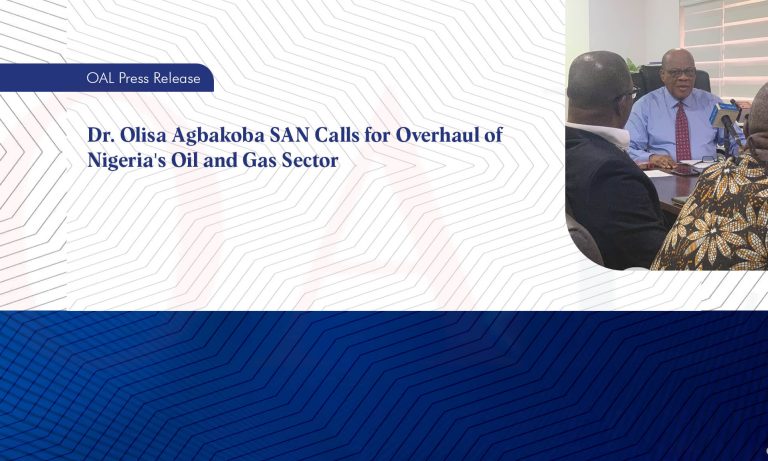
Design Thinking in the Legal Industry: Introduction to Legal Design

Design Thinking in the Legal Industry (Legal Design) is the application of human-centered design to the world of law, to make legal systems and services more human-centered, usable, and satisfying. It is a process of applying the principles of design thinking to the practice of law and access to justice.
The Society for Computers and Law defines Legal Design as “delivering the law differently – according to the needs of the people the law is intended to serve – so that it is more engaging, easier to understand and more accessible for people”.
Legal design is a way of creating and making legal services accessible, with a focus on how usable, useful, and engaging these services are.
Design Thinking at a Glance
As a principal concept of problem-solving, design thinking has been adopted across various sectors of the economy. It has been used to develop new ways of solving old problems with the customer being at the center of all the firm’s efforts.
It is an approach to problem-solving that takes into account the specific needs of the users and building solutions that would meet those needs as satisfactorily as possible. In as much as it’s a process, once it becomes common practice and widespread within an organisation, it becomes a mindset.
Design Thinking always starts with the end in focus; only through constant contact and observation of the end-users can firms successfully develop solutions that meet their needs.
Design Thinking Application in Other Sectors
Design Thinking has been adopted in solving problems in different sectors of the economy in different countries. We will take a look at one of them.
The Problem of Financial Inclusion
The problem of financial inclusion is one that persists all over the world especially in developing nations. In a 2017 survey conducted by the World Bank, 64% of Nigerian respondents cited “having too little money to use an account” as a reason for not having a financial institution account. Low-income earners are more likely to be excluded than high-income earners and despite the CBN’s and other agencies’ efforts to solve this problem, it’s still existing till now.
How Design Thinking Helped Improve Financial Inclusion in Bangladesh
A recent Phillips Consulting Report highlights the unique case of Grameen Bank in Bangladesh. Grameen Bank, a community development bank and microfinance organisation that provides financial services to the underserved and largely unbanked designed a credit delivery system to provide banking services to the rural poor. The bank identified poverty as one of the reasons why a large percentage of their population remained financially excluded and provided microcredit to the poor without collateral. This solution solved 2 major problems: The problem of financial inclusion and the problem of poverty to a large extent. Microfinance banks were already in existence but Professor Yunus of Grameen Bank leveraged on design thinking to develop a version of the banking model that worked for his end-users.
Ref: Phillips Consulting Limited: Design Thinking for Financial Inclusion, Nov. 2019
Adoption of Design Thinking in the Legal Industry in Nigeria (Legal Design): Emergence of New Legal Business Models.
We will agree that the market for legal services is changing. Clients’ needs have become more pressing, new markets are emerging and client expectations have greatly adjusted. This underscores the need for lawyers and law firms, in general, to develop new approaches to solving client problems, maximizing human and other organisational resources and at the same time promoting a culture of constant innovation and creativity within the firm.
What are the objectives of Legal Design?
- Helping the layperson understand the legal professional;
- Help Law firms achieve incremental short-term improvements and breakthrough long-term change.
- Help Law firms understand the unique needs of their clients then design for their specific needs to create tailored legal solutions that actually work.
Areas of Design Thinking Application in the Legal Industry
Information Design: This is communicating with law firm clients or prospects from their point of view. It entails breaking down complex legal terms that will educate them and add value to them as individuals and to their respective businesses.
Organisational Design: This is structuring and designing our law firms in such a way that the client is at the heart of whatever activities that go on within our organisation. This will promote efficiency in operations and work output.
The application of design thinking to our organisational structures will lead to the creation of niche practices and the establishment of boutique law firms. Firms will begin to unbundle large and complex practice areas to focus on fewer and specific ones. This will increase the chances of specialisation and bring about the rise of a new type of legal expert ( the ones in tune with practices in otherwise overlooked areas of the economy). For instance, a law firm with a robust banking and financial services/Fintech practice may decide to spin-off a smaller practice or focus group that is dedicated to Fintech alone which functions differently from the general practice in order to improve efficiency. This will lead to the creation of legal services tailored to the Fintech sector.
Product Design – Introducing Legal As a Service (LaaS) Business Models
As the adoption of legal tech among law firms shows no sign of slowing down, a new business model is on the rise. This new model makes legal software applications directly available to clients over the internet.
The business model shares many similarities with the Software as a Service (SaaS) software licensing and delivery model. LaaS is an innovative framework designed to afford clients the benefits of accessing legal services at an affordable, CONSISTENT price. Patterned after the managed services delivery model in the IT industry, the LaaS model delivers legal services proactively in a preventative way with reasonable consistent costs.
Design Thinking Process in the Development of Legal Tech Services
- Empathy – Put yourself in the shoes of the client or the legal service user so as to understand their pressing needs.
- Define the Problem – After Empathizing with the users, list out the specific problems they are faced with. In these parts of the world, this can be Access to Justice, Resolution of Commercial Disputes, Client Representation, Document Generation, etc.
- Ideate – Come up with ideas that can solve the problems that you have outlined.
- Prototype – Develop prototypes of these ideas and deploy them for testing.
- Test – Test these new products and solutions, gather insights and improve on the products to achieve product-market fit.
Areas that Legal Tech Can Be Adopted
- Client Intake and Engagement: With the introduction of technology, client intake, acquisition and engagement can now be automated. The development of chatbots, legal directories, and other software solutions will bring law firms close to prospective clients and clients can interface with them in real-time.
- Feedback Mechanisms: With simple feedback solutions, clients can now give instant feedback on services rendered by lawyers, their whole client experience and many other important metrics with which we determine the success of your legal practice.
- Document Builder and Document Review solutions: The generation of documents such as simple contractual agreements can be automated using advanced technology.
- Legal Directory (Find a Lawyer)
- AI and Machine Learning Solutions which can be used to predict the outcome of cases, find precedents and automate workflow.
- Personalisation of the client journey
What does the Application of Design Thinking in the Legal Industry mean for Clients
For Businesses and Individuals, legal design will:
- make legal services less ambiguous and easily understandable.
- Make them more empowered and in control of the complexities of their legal matters and the laws that apply to them and their businesses.
- Equip them to make the right decisions as it relates to their businesses and the law.
- Cuts down the time required for them to have their legal needs met.
What Does the Application of Design Thinking in the Legal Industry Mean for Law Firms?
When applied, Legal Design will help law firms:
- Work Smarter and not necessarily harder – This helps build an agile system of work as opposed to a rigid structure.
- It helps law firms become more predictive as opposed to being responsive to the changing needs in their operating environment.
- Remain competitive as their products and solutions are built from the existing needs of the end-user.
- Deploy Technology more efficiently and improve internal processes in the organisation.
- Maintain a quicker turnaround time in delivery of client services excluding litigation or other statutory matters.
- Create a pathway for other non-legal professionals to play an active part in adding value to the firm (i.e creation of new roles such as business development managers, Data Analysts, product managers, etc)
- Become more forward-thinking and creative in generating solutions for problems
- Put their focus on the client, and win clients in better ways, deliver them better services tailored to their explicit (and buried) needs — and to communicate information to them in clearer, more compelling, and more usable ways.
- Build a new set of professional paths and opportunities for lawyers, with new kinds of jobs and competencies.
- Develop new ways of collaborating, improving processes and decision-making, and build stronger communities inside of legal workplaces
- Generate ideas of how to serve clients, lawyers, and the general public in new ways — through technology or otherwise, and to build ideas into viable products and businesses.
Adopting Design Thinking in the Legal Industry: Promoting Innovation in the workplace.
Contrary to what some might believe, Design Thinking is not a Wild West scenario devoid of rules. Despite the workplace freedoms associated with it, Design Thinking does not eliminate the need for clearly defined corporate governance structures, following precedents or being detailed in the execution of work. In actual fact, it should be viewed as the introduction of creativity into detailed processes that will lead to developing creative and innovative solutions to each problem we are faced with.
To foster an atmosphere of design thinking and innovative problem solving, Law firms should foster the following in the work environment:
- Curiosity
- Collaboration
- Action
- Experimentation
Conclusion
Embracing design thinking requires a mindset shift for legal professionals. It necessitates redesigning processes and current practices to focus on the ‘users’ of legal services and the legal system as a whole.
Importantly, design thinking cultivates a culture of innovation in the legal profession that not only benefits clients, but can also pave the way towards building better law for all stakeholders in the legal ecosystem.
It will also go a long way to make law firms more efficient in the delivery of their services while at the same time improving accessibility, understanding of key legal concepts for businesses and individuals.
Written By: Stephanie Etiaka, Communications Officer & Beverley Agbakoba-Onyejianya (Senior Associate/Head- Sports, Entertainment and Technology Practice)
Author



